- Ordered by Shipyards & Yacht Brands
- Ordered by Date
- Yacht Designers
- About and Contact
- Yacht Support Vessels
- Tenders & Toys
- Some interesting other sites in the superyacht world

Ice Class Yacht
Conversion Project MASTER // Icon Yachts
ICON Yachts presents the 70m conversion project MASTER, designed by Espen Oeino.ICON Yachts’ latest conversion project, the 70m Project MASTER, was pulled into Harlingen’s shipyard’s drydock…
LA DATCHA // 77m Damen SeaXplorer
LA DATCHA is the name of a Damen SeaXplorer motor yacht in a 77m version.Damen Yachting launched the new luxurious expedition yacht LA DATCHA in July 2020 at the facilities in Vlissingen in the south…
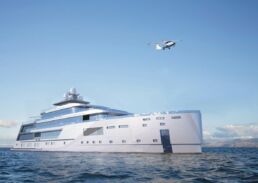
80m Hybrid Explorer Yacht // Gill Schmid Design
80m hybrid explorer yacht with ice class and generous surfaces of glassTogether with Tim Dempers Studio (exterior), Gill Schmid Design (exterior and interior) created the 80m hybrid ice-classed…
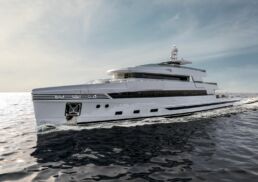
Rosetti 48 Support Vessel
Alongside the 85m supply vessel presented in 2017, Rosetti Superyachts comes up with 48m version.Like the other yacht concepts, also the RSY 48 comes has been designed by Tommaso Spadolini. This…
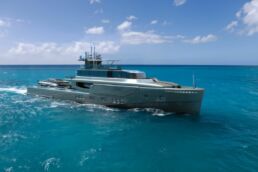
Argo - 48m Explorer by Rossinavi and Ken Freivokh
Rossinavi and yacht designer Ken Freivokh presenting the 48m concept ARGO.ARGO is a multi-talented and eye-catching explorer yacht concept with the largest open deck in her class. The big aft deck…
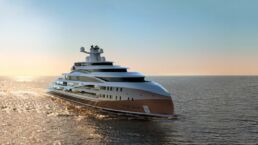
103m Concept 'Sea Hawk' by Hawk Yachts
The SEA HAWK is an extremely stylish ground- and ice-breaking expedition yacht concept, developed by Hawk Yachts.SEA HAWK features Polar Class 6 to break 80 cm first-year ice. In combination with…
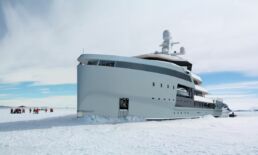
Amels / Damen SeaXplorer (Expedition Yacht 55 - 100m)
Damen (the mother company of Amels) presents a concept of a massive designed expedition ice class yacht called SeaXplorer - A luxury SUV for the seven seas.Damen is normally the part of commercial…
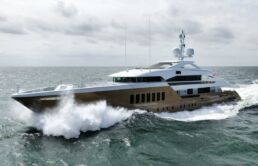
AZAMANTA // Heesen Yachts
Heesen delivered the 55m motor yacht Azamanta to her owners and exceeded the contractual maximum speed by 0.4 knots.Pictures by Dick Holthuis Azamanta has Van Oossanen’s Fast Displacement Hull…
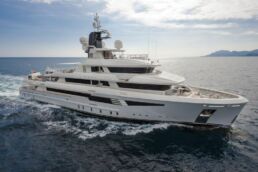
I-NOVA // Cosmo Explorer
The Greek shipyard Cosmo Explorer built the 50m I-Nova in 2013 to a Cristiano Gatto design who is responsible for the exterior and interior design.The yard and designer developed I-Nova as a D0 ice…
Using a minimum of third party cookies for YouTube, Vimeo and Analytics.
Privacy Preference Center
Privacy preferences.
Google Analytics
672 Wine Club
- Motorcycles
- Car of the Month
- Destinations
- Men’s Fashion
- Watch Collector
- Art & Collectibles
- Vacation Homes
- Celebrity Homes
- New Construction
- Home Design
- Electronics
- Fine Dining
- Benchmark Wines
- Brian Fox Art
- Disneyland Resort
- Ka La’I Wakiki Beach
- Kalamazoo Grill
- Raffles Hotels & Resorts
- Sports & Leisure
- Health & Wellness
- Best of the Best
- The Ultimate Gift Guide
Boat of the Week: Inside a 165-Foot Ice-Class Explorer Yacht That Can Go Anywhere in the World
"i-nova," one of the first authentic expedition yachts, was built to see the world. now she's looking for an owner ready to make that happen., julia zaltzman, julia zaltzman's most recent stories.
- These Charter Yachts Let You Tag Hammerhead Sharks and Count Spirit Bears for Research
- These Luxe Villas Are the Place to Stay in This Retro-Chic Enclave on the Tuscan Coast
- The 7 Most Exciting New Superyacht Marinas in the World
- Share This Article

To paraphrase the late Ella Fitzgerald, “It isn’t where you’ve been; it’s where you’re going that counts.” And when it comes to I-Nova , the 165-foot explorer yacht built for “uncompromising adventure,” that place is anywhere in the world. Now, it needs to find that place—or many places.
Built in 2013, the first of the Cosmo Explorer series was an owner’s labor of love who planned to see the remote corners of the world. Unfortunately, that never happened. Now up for sale, the yacht is searching for an owner who will make most use of her expedition hull.
Related Stories
The shipyard that built the ‘titanic’ has filed for bankruptcy.
- This Bonkers Space Balloon Just Completed Its First Full Test Flight
This New Superyacht Line Wants You to Feel Like You’re Cruising in a Sports Car
I-Nova ‘s build team had a stellar international cast: A “Made in Italy” interior and exterior by Italian designer Cristiano Gatto. A Dutch collaboration between Vripack and Van Oossanen for the go-anywhere hull. The owner, planning to do an expedition series called the Cosmo Explorer, had the yacht built at Greek shipyard Megatechnica. Experts in the construction of commercial vessels, Megatechnica cut no corners during the five-year build process.
“The owner wanted to show what you could do outside of the Northern European shipyards,” Alex Banning, director at SuperYachtsMonaco, told Robb Report . “It was a project of his own doing, using best-in-class suppliers and builders.”

I-Nova showed her expedition-yacht pedigree on a trip to Greenland. SuperYachtsMonaco
The result is an ice-class vessel equipped with some serious go-anywhere capabilities. Her vertical bow is hydrodynamically optimized to make her an efficient and long-range cruiser. The hull is reinforced with extra-thick steel plates specifically for polar expeditions. The propeller, sea chest, rudder, steering gear and seawater cooling systems meet ABS DO ice class requirements. And at 165 feet in length, though arguably compact for an explorer, her huge interior volume and shallow draft give her great versatility.
“When the first ideas and concepts emerged in 2009, I-Nova was right on the leading edge of the expedition sector of the market,” says Banning. “The owner wanted to keep it compact and practical, built like a hammer with as much of a silk glove as you can add, with all of those explorer capabilities.”
Included in that concept is what Banning refers to as the “opinion-dividing” rear deck built specifically to store a Fabio Buzzi 34 tender. The semi-enclosed rigid-hulled inflatable is a lasting testament to Buzzi, the owner’s friend, boat builder and racer who died last year in a speedboat crash. The Buzzi tender isn’t included in the sale, but it exemplifies the type of serious vessel that can be accommodated aboard I-Nova , along with a 5-ton crane with a 30-foot outreach, a second tender and a full range of water toys. Only serious explorers would have space for that many tenders and toys.

The “Made in Italy” interior by Cristiano Gatto is modern, light and airy, a nice contrast to the buttoned-down exterior. SuperYachtsMonaco
“Some people think the Buzzi takes up too much space, but the owner thinks, ‘I’ve built a deck to carry my boat wherever’,” says Banning. “He likes driving it into all the tiny bays and swimming, diving and snorkeling from it. That’s what you can do with a boat deck like that.”
The owner’s original intention was to build an expedition series under the Cosmo Explorer brand. The concept would offer unrestricted cruising on vessels ranging from 148 to 210 feet.

A beach club and dedicated dive room are located on the lower deck. A large terrace for evening drinks is found on the bridge deck. The observation deck offers panoramic views, as well as a covered exterior gym and spa pool. But the wow factor is reserved for the award-winning interior, which includes an extensive use of 50,000-year-old Kauri wood and a split-level master suite that can be used as an observation lounge, homeschooling room or even a cinema.
“Gatto took the lead on the project alongside the owner, which is why the interior and exterior gel so well, and the interior has a quirky yet hugely flexible layout,” says Banning.
Powered by twin MTU 16V 2000 M70 engines I-Nova offers low engine noise, low vibration and bags of autonomy. As Banning says, “she’s got great DNA.”
The yacht is for sale through SuperYachtsMonaco for $23.5 million. Check out its smart design below.

SuperYachtsMonaco

Read More On:
More marine.

This New Catamaran Concept Was Designed to Carry Your Bugatti Across the High Seas

Meet Spitfire, a New 164-Foot Superyacht Based on a High-Performance Patrol Boat

Meet the Wine Club That Thinks Differently.
Receive editor-curated reds from boutique California producers four times a year.
Give the Gift of Luxury
Latest Galleries in Marine

Tribale 120 Gran Turismo in Photos

Spitfire Superyacht in Photos
More from our brands, gu debuts new york flagship, e-commerce, latest undercover collaboration, coach prime hype peters out as colorado’s tv ratings crater, ‘american love story’ moving forward with john f. kennedy jr.-carolyn bessette season: it ‘really resonates right now’, a new edition of john elderfield’s ‘frankenthaler’ shows an artist with real new york chutzpah, the best yoga mats for any practice, according to instructors.
Horizon Yacht USA
Model Series
Sleek and Stylish
Fast Displacement
Timeless and Versatile
Modern and Spacious
Defining Exploration
Elegant and Luxurious
Superior Power Catamarans
Custom Collection
Sleek and stylish
Designed for both luxury and function, the E series blends elegant styling with practical design in classic flybridge motor yachts from 56 to 98 feet. Both open and enclosed bridge versions are offered on select models along with a multitude of layout options, allowing the E series to satisfy virtually any cruising lifestyle.

From the design studio of Cor D. Rover and Horizon Yachts, the FD Series offers advanced fast displacement motoryachts that blend modern flair with functional living and entertaining spaces. The yachts in the FD Series are fitted to the highest standards with options for owner customization. Perhaps the most significant aspect of the FD Series lies below the waterline, where Horizon's proprietary High Performance Piercing Bow design, hybrid hull shape, and tunnel design deliver efficient cruising speeds and excellent stability, while also providing increased interior volume and comfort.
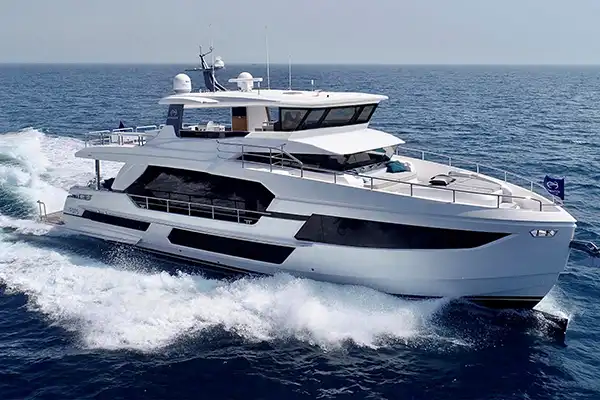
Timeless and versatile
A breakthrough in style and functionality, the V series offers a modern take on classic design, with fluid lines and flexible features such as an open or enclosed bridge and fishing cockpit. The V series yachts are built to be run by an owner/operator but can also accommodate crew, showing the true versatility of these models.

Modern and spacious
Modern exterior styling characterizes the sleek RP series, with increased outdoor entertainment as one of the key features of these yachts. A variety of interior layout and design options are available, all of which include an interior pilothouse. An RP yacht is perfect for sun worshipers, adventurous families, and active cruising enthusiasts.

The EP series is comprised of the EP150, an ice-class expedition yacht built in steel and designed for efficient and comfortable cruising. Offering remarkable interior volume and an extended range, the EP150 sets the standards for safety, luxury and quality in long-range expedition yachts.

Elegant and luxurious
The tri-deck P series combines industry-leading design with advanced construction technologies to create a yacht of extraordinary style and luxury. Built to suit your lifestyle, the P series provides safe, comfortable cruising wherever your travels may take you.

Power Catamaran
The PC series is designed, engineered and built as an advanced luxury cruising power catamaran series and is perfectly suited for the cruising connoisseur. With features normally found on much larger motor yachts, the PC series offers elegance, comfort and space on a yacht of a manageable size that is suitable for owner operation.

The CC series, also known as our Custom Collection, comprises all custom projects that go beyond the models currently offered within Horizon's luxury yacht collection. These custom projects are defined by the owner's personal lifestyle and requirements, resulting in a completely bespoke luxury yacht that retains Horizon's signature quality.

- News & Events
- Privacy Policy
- Cookie Policy
- Accessibility
- 1201 U.S. Highway 1, Suite 1, North Palm Beach, FL 33408
- 561.721.4850
- [email protected]


- Catamarans and multihulls , News , Premieres , SAILBOATS
Ice Cat 64: performance, spaces and elegance
- February 24, 2021
The new Ice Cat 64 promises remarkable performance and great volumes on board
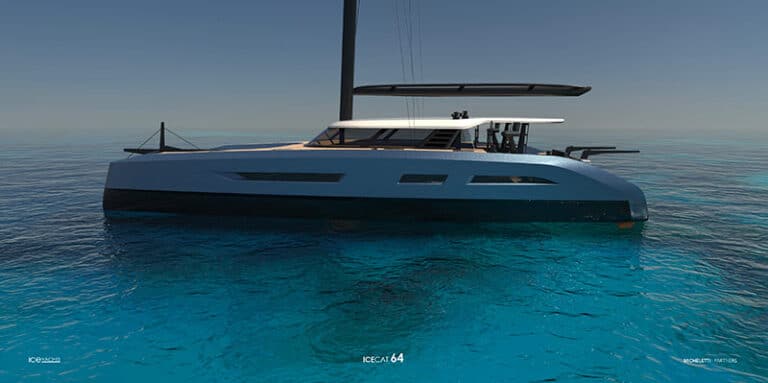
On board the Cat 64, speed and comfort do not cancel each other but complement each other, creating an unprecedented multi-hull model which represents the best response to the cubit shapes which, unfortunately, we are used to . Through a clever optimization of volumes, both on and below deck, the Cat 64 benefits from 12% more usable space, compared with the previous and successful Cat 67.
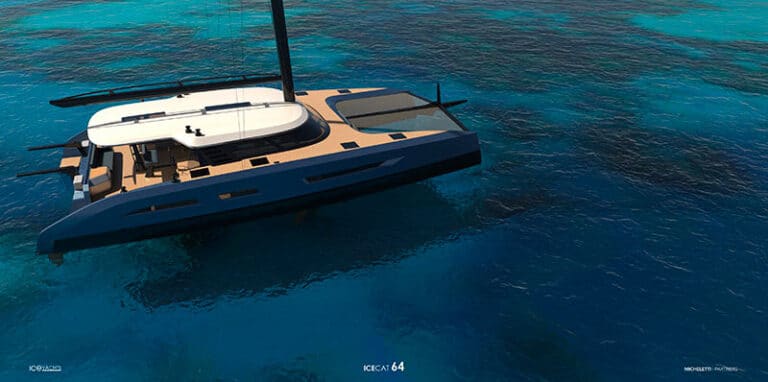
In addition to being spacious and fast, the Ice Cat 64 is also beautiful and stands out for her undisputed class and elegance. Her sleek, streamlined, clean and essential lines are the result of a joint collaboration between interior and exterior designer Lucio Micheletti , Felci Yacht Design , which took care of the waterlines, and Giovanni Belgrano di Pure, author of the composite structures. Three giants of naval engineering recruited by the shipyard that produces the largest sailing catamarans ever built in Italy.
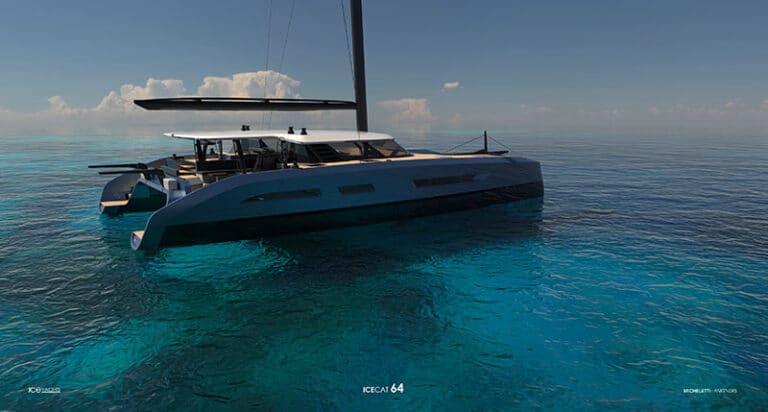
“ Our best boat is always the next one, even if there is no doubt that this model is one among the best in the collection – explains Mr. Malgara – The Cat 64 is the ideal option for anyone looking for a perfect compromise for his definitive boat . As an owner and a builder, I make a spasmodic search for the absence of defects. In short, in a boat, I am always looking for perfection “.
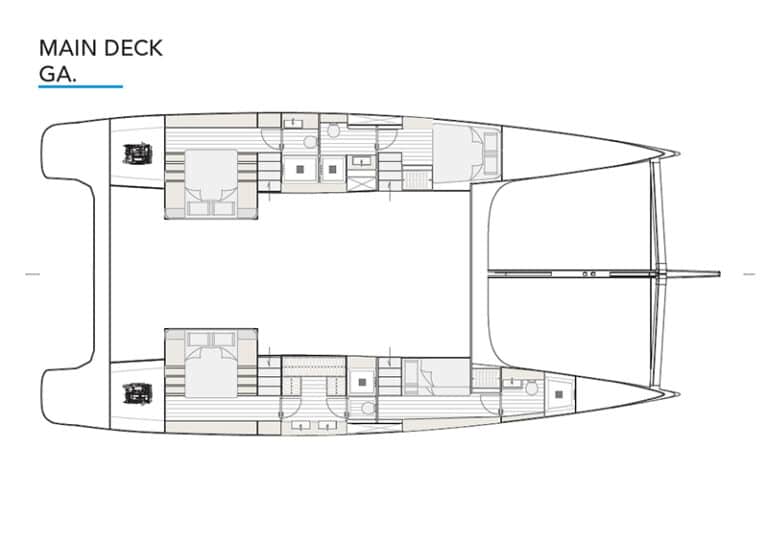
An abundance of volumes that, with the typical stability of a catamaran , can travel at cruising speed of around 15 knots and a top speed of 29. Sailing performance, Ice Cat 64 performance.
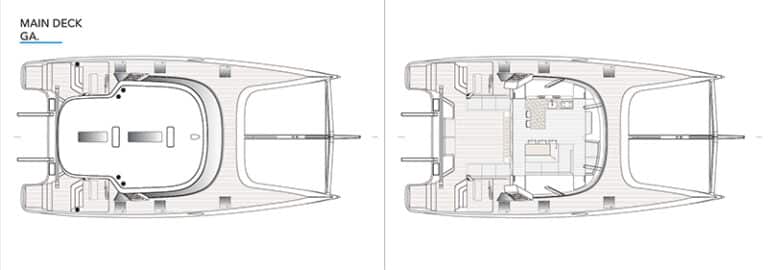
Ice Cat 64: Technical Specs
| 19.50 m | |
| 9.8 m | |
| 1.05 m | |
| 2.90 m | |
| around 24 t | |
| 2 x Volvo D3 110 hp Saildrive or V-Drive |
www.iceyachts.it
Leave a Reply Cancel reply
Your email address will not be published. Required fields are marked *
Save my name, email, and website in this browser for the next time I comment.
Language switcher
Browse categories.

You might be interested in
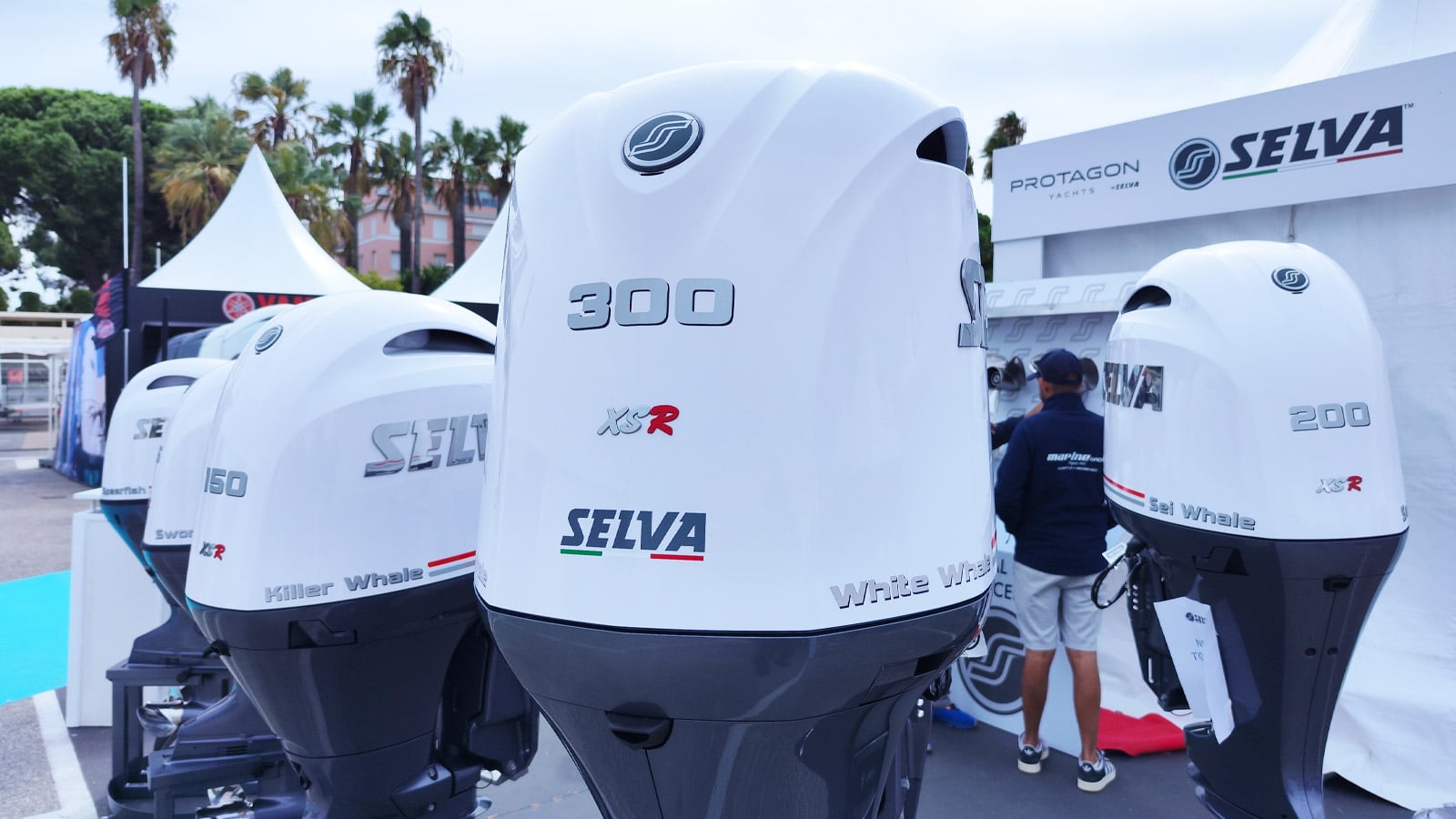
Selva Marine launches the 300 XSR, the perfect Mediterranean-oriented outboard
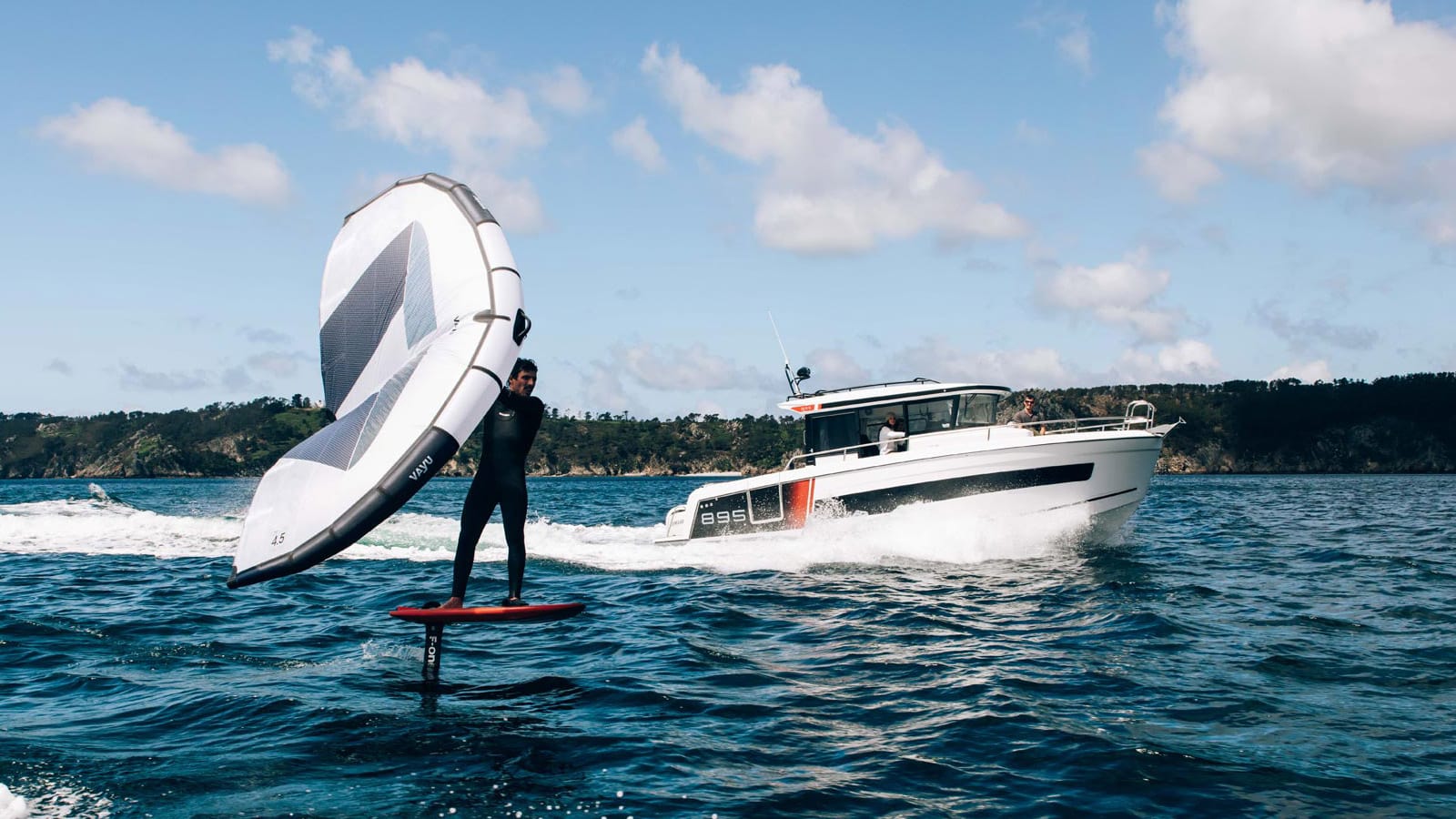
Jeanneau conquers new markets: all the latest additions from Cannes 2024
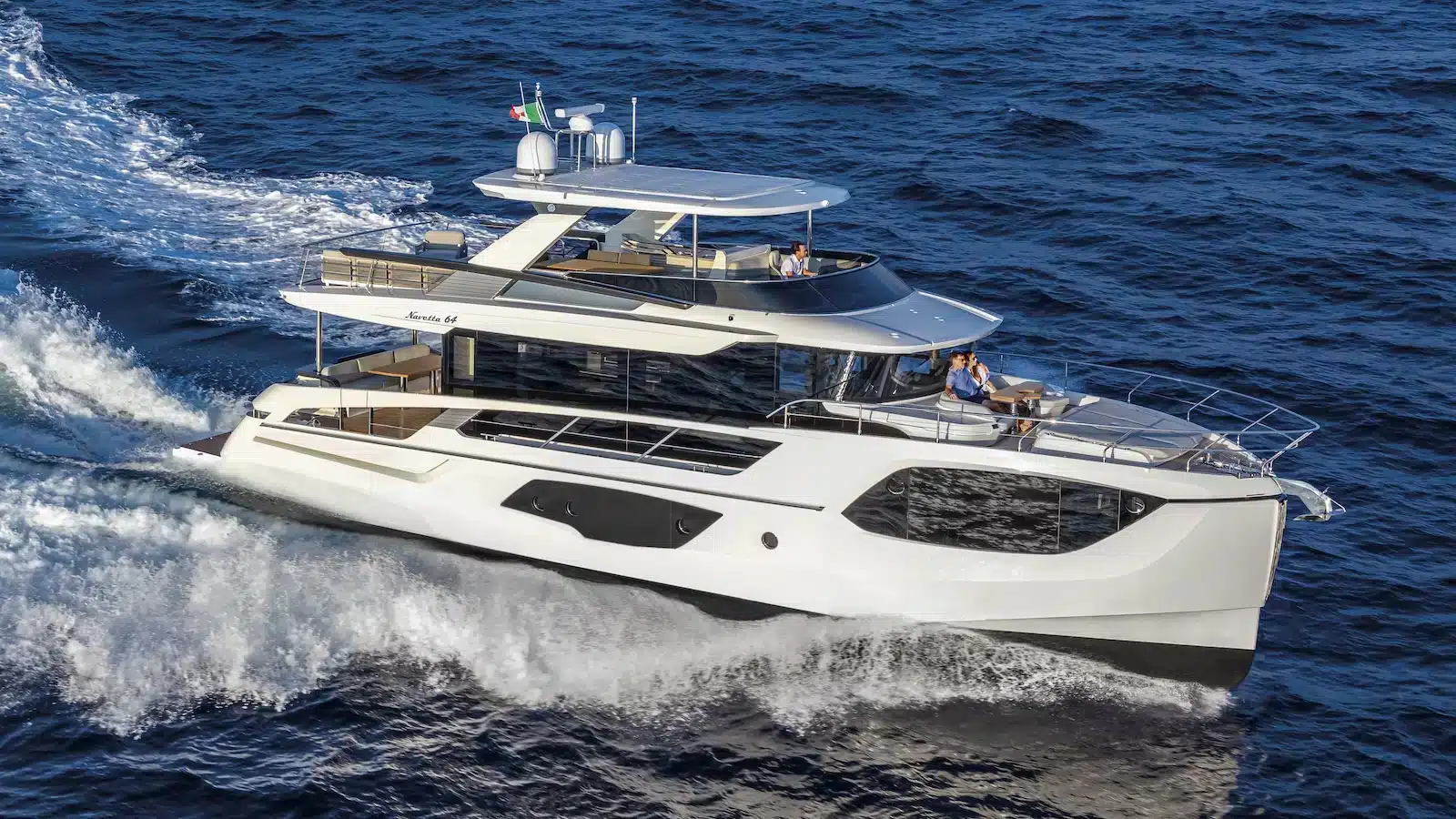
Absolute Yachts at Cannes with a contemporary and innovative collection
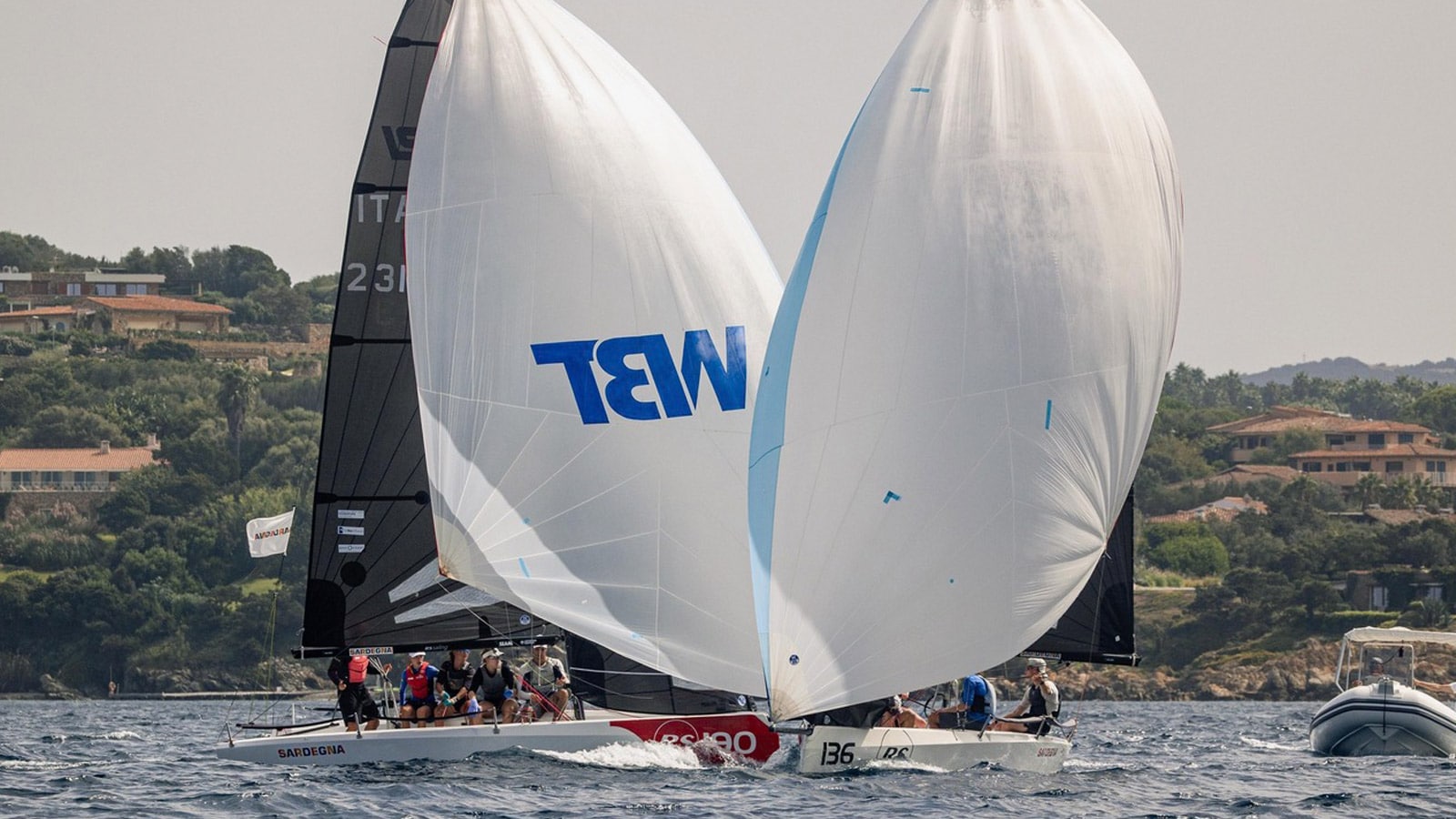

Innovative Sailing World Championship: English crew triumphs

© 2021 – THE INTERNATIONAL YACHTING MEDIA Designed by BLive Communication
ABOUT YACHTINGNEWS.COM
Yachting News is an interactive multimedia magazine dedicated to the world of boating.
The International Yachting Media is the worlds most widely read boating magazines network. Whit its portal It broadcast its original contents in five languages and in more than 200 countries developing 950,000 views a week. Our web portals are the main source of information for yacht and boat owners, the place where they can find anything about their boating passion.
THEINTERNATIONALYACHTINGMEDIA.COM | SUPERYACHTS.NEWS | YACHT DIGEST
VIRTUAL BOAT SHOW | TUTTTOBARCHE | TOUSLESBATEAUX | TODOSLOSBARCOS
BOATING NEWS FREE APP

To provide the best experiences, we and our partners use technologies like cookies to store and/or access device information. Consenting to these technologies will allow us and our partners to process personal data such as browsing behavior or unique IDs on this site and show (non-) personalized ads. Not consenting or withdrawing consent, may adversely affect certain features and functions.
Click below to consent to the above or make granular choices. Your choices will be applied to this site only. You can change your settings at any time, including withdrawing your consent, by using the toggles on the Cookie Policy, or by clicking on the manage consent button at the bottom of the screen.
Subscribe For Latest Updates
Sign up to receive the best of Yachting News, sea trials, boat review and world premieres .
The only ADVERTISING FREE newsletter
You are using an outdated browser. Please upgrade your browser or activate Google Chrome Frame to improve your experience.
- Link to search page
- US: +1 (561) 833 4462
- US: +1 (206) 209-1920
- MC: +377 99 90 74 63
Expedition Yachts for Sale

For anyone looking for expedition yachts for sale, these are a quickly-growing market in the yachting world, as increasing numbers of yacht owners choose to get off the beaten track and indulge in some remote cruising! Here is the full current selection of all expedition yachts for sale worldwide with photos and full specifications for each.
Expedition yachts, often called explorer yachts, are extremely versatile. As much at home in the wilds of Alaska as sitting pretty in the glamorous port of Monaco, expedition yachts are built to cross the world’s oceans while offering the extraordinary comfort of a luxury yacht.
The explorer vessel featured above, LEGEND Expedition Yacht For Sale, is a 254-foot or 77m Icon Expedition yacht available for sale. She is the only ice breaking mega yacht in the world. The proven world cruiser features a panorama Jacuzzi on the main deck, large sales throughout, welcoming cocktail bars, Movie theaters, Exclusive Balinese Spa (pictured below) and a gym.
AKULA Expedition Yacht For Sale – for full specifications and photos, click on the link.
Expedition yachts for sale are also becoming increasingly common options for new-build construction projects, but there are also many existing expedition yachts that have been converted from commercial vessels. As such, often expedition yachts for sale have wonderful histories as research ships, hospital ships, ice-breakers, trawlers and military vessels, and are now enjoying their latest incarnation as impressive luxury yachts.
Often sporting a more functional exterior, the interior of explorer vessels are as palatial and luxurious as their traditional superyacht counterparts. Expedition-style yachts tend to have a wider beam, thereby offering more volume for larger cabins and interior spaces. The yacht’s generous interior spaces are designed for live-aboard comfort for extended periods, and many of these yachts will have living quarters or suites for the owners, rather than smaller cabins.

STAMPEDE Expedition Yacht For Sale – for full specifications and photos, click on the link.
Outside you’ll find generous open decks with elegant dining and entertaining spaces, with all the luxuries you’d expect on a superyacht. Jacuzzis, helipads and observation decks are common features found on expedition yachts for sale.
Expedition yachts are sometimes nicknamed ‘toy carriers’, as they have plenty of space to carry the tenders and water sports equipment you’ll want as you cruise exotic places. Explorer yachts for sale often carry crew who are trained as instructors, so you might learn diving, jetski, kitesurfing or even photography while cruising the South Pacific or the Galapagos.
Because they’re built as sturdy ocean-going vessels, expedition yachts are built with a strong focus on safety, self-sufficiency and comfort underway. Some expedition yachts have reinforced ice-breaker hulls for exciting Arctic expeditions, and all have modern stabilization technology and state-of-the-art safety systems. Expedition yachts are built with large fuel tanks giving them exceptional range, while onboard water-makers and excellent cold and dry storage allows them to make long sea voyages without needing to stop for supplies. Because they are built to be away from port for long periods, expedition yachts normally carry the best in communication, entertainment and Wi-Fi capabilities.

THE BIG BLUE Expedition Yacht For Sale – for full specifications and photos, click on the link.
Expedition yachts allow the yacht owner to get to all corners of the world, opening up beautiful destinations otherwise difficult to reach. From the snowy landscapes and penguins of Antarctica to the coral reefs and jungles of Micronesia, an expedition yacht opens up the world for exploration.
There are a multitude of options available for expedition vessels. Above are examples of existing brokerage vessels. Other options to consider include Full Custom Builds and Semi Custom Builds. A Fully Custom Expedition yacht build is a ground up design and specification package, which will include tank testing of hull forms, 3D modeling, etc. A Semi Custom Expedition Build includes an existing hull form and common engineering package, already being used and then customizing the house styling, layout and décor.

The 80m Explorer Yacht, unnamed, is an example of a Fully Custom Explorer Build. The vessel includes float in float out wet dock that will be able to hold a 65-70 foot sport fisherman in the stern, when the sport fish is removed the tender well becomes a deep swimming pool. She is diesel electric with Azipod drives. The vessel has the capability of landing two helicopters and can house both helicopters in a single hangar. The vessel also has a large tender garage that could hold multiple smaller vessels including a RIB, flats boat, jets skis and two submarines. The vessel has accommodations for 18 guests and crew of 36. The vessel would be commercial fit and finish on the exterior and the interior are envisioned to be built to high end cruise ship standards.

The 75m Explorer, by Admiral Shipyards is an example of a Semi Custom Build. The yacht’s exterior design, which remains unnamed, is a display of an elegant yet robust platform with generous exterior deck spaces. The expansive aft deck is designed to accommodate an Agusta Grande helicopter, complete with a storage and refueling hangar below deck.

The interior is spread across four decks and will be finished in a timeless nautical style that is finished with contemporary elements, which will be built and installed by German interio specialists, Fitz Interior. The owner, who is expected to spend prolonged period onboard, will be treated to an exclusive main deck area covering over 300 square metres with five additional guest suites on the lower deck.

Explorer yachts look a little bit different and offer extraordinary cruising potential, marking an exciting difference in the luxury yacht market for those who love an adventure on the open ocean. If you are be interested in viewing our full portfolio of exhibition yachts for sale, reach out to the sales team by email , by this sales inquiry form or by calling one of our yacht brokerage offices worldwide.
Yachting World
- Digital Edition

Video: Ice 70 review – a luxury, fast Med cruiser
- Toby Hodges
- December 6, 2021
Looks, build quality and really smart design – has the new Ice 70 got the full package? asks Toby Hodges after a maiden sail
Product Overview
Price as reviewed:.
Some yachts will always produce that instant spark of attraction. With others, the appeal may be slower burning, where facets or practicalities will help make the appeal more than skin deep. This new Ice 70 may just have that rare ability to combine both.
The opportunity for a first quick sail after its debut showing at Cannes Boat Show confirmed to me that, for a multitude of reasons, the Ice 70 is a standout new large yacht. It has the looks to stop you in your tracks, the performance and finish quality to really impress, as well as something else too, something more enduring: homogenous and harmonious design.
Why is that a big deal? Many yards have models at this market level, particularly in Italy. But a semi-custom or custom yacht will typically involve input from multiple sources. The naval architecture will come from one firm, the deck styling from another, then the interiors, structures, rig and engineering design will all come from different experts. While it can work wonders, the overall effect can also risk being a little disjointed and can certainly be an overwhelming prospect for an owner to manage.
Here, one designer and one shipyard have worked together for decades and the results on the Ice 70 are telling. “It took my team and I more than 4,500 hours for the design and the complete engineering of the boat,” Umberto Felci tells me. “This makes the difference in terms of quality and coherence of the project and efficiency of the construction of the future yachts.”

A slippery, powerful hull shape combines with plenty of sail area for enticing light wind sailing. Photo: The International Yachting Media
For those unfamiliar with Ice Yachts, it is a performance cruising brand established 10 years ago from the experienced CN Yacht 2000 shipyard near Milan, which has built around 80 semi-custom yachts over the last three decades. So while this new Ice 70 may be the longest yet for the Ice brand (which also has a 72ft cat in build), the shipyard itself has launched dozens of composite yachts of this size (mostly from the Felci board).
Stepping aboard the Ice 70
The Ice 70 is designed for robust, fast offshore cruising. This first example is a special version made for a client who usually sails alone with his permanent skipper, Bobo Innocenti, so it needed to be easy to manage.
Innocenti explained that they have moved up from a Solaris 50 and that 90% of their time is spent cruising in the Mediterranean. An essential feature therefore was the ability to have control of everything from the helms.

The sleek coachroof still provides plenty of light below and has portholes embedded in the aft coamings. Photo: The International Yachting Media
The pedestals are a work of art and appear to grow out of the side deck coamings to form sculpted branches on which to hold the crucial array of push button controls. All systems, from the sheets and halyards, down to the telescopic keel, lighting and the mooring gear, can be operated from these consoles.
Article continues below…

Oyster 595 test: best selling Oyster ever
Your world becomes a very small place when the ease and convenience of travel is lost, a notion that has…

Video tour: YYachts Tripp 90
Over the past few years YYachts has cemented a reputation for producing large composite yachts that are remarkably uncomplicated and…
Then there is the bimini, so often an afterthought. Here the carbon framework was designed by Felci too and blends smoothly into the exterior aesthetic, like the spoiler on a car. With an owner who likes to actively sail for four or five hours a day before being able to relax out of the sun in the cockpit, it’s a crucial feature. It can be removed, given some time, and the sprayhood dodger can quickly be folded away.
The interior will likely appeal to the majority thanks to classy styling which fuses the traditional use of teak and leather with modern touches. The result is elegant, tasteful and peaceful, while the decision to avoid stuffing it full of cabins means it feels like a much larger yacht.
Of course the reason for choosing such a design is not just for looks, it needs to perform. Snapping up the brief chance to try Ice 70, Thalassa2 out in Cannes, I worried that by the time we made it out of the bustling Port Canto marina and through the Cannes anchorage there’d not be enough of the afternoon breeze left to give us any meaningful sailing experience.

The generous saloon has a bench which slides across to fill in as a daybed area to starboard. Photo: The International Yachting Media
I was (gratefully) proven wrong while being shown the real merit of having a large, performance-oriented yacht like this, one which is crafted around being able to maximise single figure windspeeds and still provide an engaging experience.
We were soon making 7 knots in 10 apparent close-hauled. The increase in stability you get at this size, shape and keel choice (telescopic) is impressive, as is the ability to sail close to the wind (up to 21° apparent). Felci, a performance cruiser maestro and a skilled dinghy racer, has produced a slippery, modern hull shape, combining high form stability with low wetted surface area.

A slippery, modern hull shape, combining high form stability with low wetted surface area. Photo: The International Yachting Media
When the Code 0 was released we were off and into a priceless spell of sailing, making 9-9.5 knots in 11 knots apparent at 60° to the apparent breeze while bathed in the golden evening light.
I imagined this to be the equivalent of driving a finely tuned Italian sports car – except with this Ice there are few boundaries, no speed limits, there’s plenty of space for your luggage/golf clubs, and you can sleep aboard in serious comfort.
70ft solo sailing
The steering felt light and direct and it was a pleasure to be able to feel pressure variances on the single carbon rudder blade. I was also impressed with how Innocenti can and does manoeuvre and sail this yacht himself and how well configured it is for him or the owner to do so.
All winches and furlers can be controlled from remote buttons on the pedestals. Even gybing the Code 0, for example, can be done short-handed from the cockpit. Although the huge headsail was furled to gybe, the neat part was having the endless line for the Code furler leading around the self-tailing jaws of the high-speed mast base winch, which is again controllable from the pedestal. Release the sheet, while pressing the winch remote button to furl, then activate the new primary winch to unleash the sail again on the other side. Impressive (when it all works smoothly)!

A sunset sail under Code 0 sold the sailing experience. The International Yachting Media
Innocenti says they fly the Code 0 until 13 knots true wind, then swap to the jib to make the same reaching speed of around 10 knots. They keep this until 20 knots before switching to the staysail.
He also says that despite this being a carbon composite build, there’s been no strict attention to weight and that comfort comes first. This is a 25-tonne fast cruiser which carries another three tonnes of water and fuel. That said, weight is certainly kept low and central. It has a full carbon rig, with hydraulic mast jack, in-boom furling mainsail sheeted to a traveller, Doyle cable-less jib and staysail and a Code 0.
The rig package alone costs more than my house, as does the lifting T-keel option – arguably the eye-watering prices required for high end performance at this size level today.
The decks are kept really clean including the single-level cockpit, flush foredeck and wide side decks, which are easy to access from the aft deck. The lead of the jib sheets to the primary winches does mar this slightly, however, by creating a tripping hazard on the side decks.

The galley is replete with domestic goods, plus three fridge-freezers which are keel/water cooled via transfer plates on the hull. Photo: The International Yachting Media
It seems a rare oversight in the otherwise slick design and I questioned if the turning blocks could be mounted inboard. Innocenti thinks this would need larger size reversible primaries to solve the problem, which would in turn create another by requiring more space.
Another slight annoyance and a downside to the cockpit protection is the need to duck below the sprayhood to move down the companionway, although the sprayhood can easily be folded away.
Below decks
When you do move below decks you’ll find a wealth of luxury and space. It really gives the impact and feel of a much larger yacht, with a layout more like an 85-90 footer – remembering that this one is designed largely for two to sail, so, other than the owner and skipper cabins there is only one guest cabin. A four cabin version is optional, as is a layout with an aft owner’s cabin.

Natural products and high quality finish give the cabins a clean, elegant feel. Photo: The International Yachting Media
The dark tones and classic styling with the abundant use of teak and burgundy leather is elegant, albeit quite masculine, and should age well. The furniture is sandwich-built with abundant use of solid teak veneers including the soles, which are punctuated with dark wenge strips.
The interior design involved plenty of owner/skipper input and shows the benefit of a genuine semi-custom approach. The aft part is particularly well conceived as the galley can be closed off from the saloon with a sliding door, yet is still accessible from the skipper’s cabin via a tech space walkway beneath the bridgedeck.
As well as conventional access to the 195hp Yanmar engine below the companionway steps, this tech space also helps allow for engine access panels from all three other sides. Innocenti’s cabin also has direct access to the machinery/genset space further aft.

Photo: The International Yachting Media
The owner’s cabin forward contains a relatively modest vee berth and practical surround stowage. The adjoining ensuite heads is particularly impressive, with a wonderful shower room with teak seat, in which you could imagine reclining and enjoying the luxury of 1,400lt water tanks. The tanks are built into the structure below the saloon floor, in composite for water and plastic for fuel.
A keelbox area for the lifting T-keel creates a longitudinal bulkhead, which is used wisely as the internal wall of the twin guest cabin and the screen area of the TV snug area to starboard.
Ice founder, Marco Malgara, thinks people don’t tend to move up from 50ft to 60ft but are more likely to opt for this size. “We said if we do a 70-footer it can’t be the same as a 60 but must have a real feeling of luxury,” he explained during our sail. I think his team achieved that handsomely. Numbers two and three are now in build.
If you enjoyed this….
Yachting World is the world’s leading magazine for bluewater cruisers and offshore sailors. Every month we have inspirational adventures and practical features to help you realise your sailing dreams. Build your knowledge with a subscription delivered to your door. See our latest offers and save at least 30% off the cover price.
This is arguably the definition of today’s luxury fast Med cruiser. Italian designed and built, it performs as its looks might suggest, but crucially, is conceived to be manageable to sail short-handed. It’s ideal then for the sailing its owner does: warm weather, slippery cruising. With its sleek coachroof design and its powerful hull and rig, the Ice 70 steals your attention from the dock, then holds it while moving throughout the boat and leaves the peak rewards for those on the wheel. It’s a premium priced large yacht and looks and feels so. While the yard is able to offer fit and finish flexibility, its collaboration with Felci design ensures the end result really is as smooth as ice.
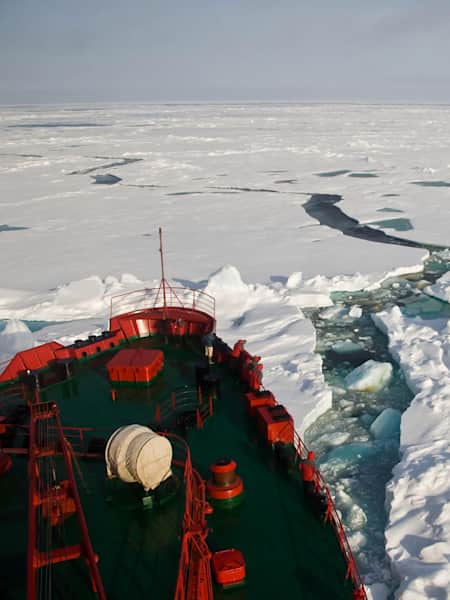
9 boats built to survive the arctic
Avanaa Kitaa
© Respectons la Terre
The NS Yamal icebreaker
The SeaXplorer luxury yacht
Beringia skin boat
© Porsild/Beringia Arctic Games
Sauna boat cruising in Norway
© Peter Schön
Inside the sauna boat
© Nils Erik Bjørholt
Avanaa-Kitaa
Arctic pedalo
© Avanaa Kitaa
Babouchka on ice
© Solbian.eu
Seawolf Kayak
Skin-on-frame kayak on pack ice
© Kiliii Fish
Seawolf Submarine
US Submarine in arctic
- Places - European, Western and Northern Russia
YEKATERINBURG: FACTORIES, URAL SIGHTS, YELTSIN AND THE WHERE NICHOLAS II WAS KILLED
Sverdlovsk oblast.
Sverdlovsk Oblast is the largest region in the Urals; it lies in the foothills of mountains and contains a monument indicating the border between Europe and Asia. The region covers 194,800 square kilometers (75,200 square miles), is home to about 4.3 million people and has a population density of 22 people per square kilometer. About 83 percent of the population live in urban areas. Yekaterinburg is the capital and largest city, with 1.5 million people. For Russians, the Ural Mountains are closely associated with Pavel Bazhov's tales and known for folk crafts such as Kasli iron sculpture, Tagil painting, and copper embossing. Yekaterinburg is the birthplace of Russia’s iron and steel industry, taking advantage of the large iron deposits in the Ural mountains. The popular Silver Ring of the Urals tourist route starts here.
In the summer you can follow in the tracks of Yermak, climb relatively low Ural mountain peaks and look for boulders seemingly with human faces on them. You can head to the Gemstone Belt of the Ural mountains, which used to house emerald, amethyst and topaz mines. In the winter you can go ice fishing, ski and cross-country ski.
Sverdlovsk Oblast and Yekaterinburg are located near the center of Russia, at the crossroads between Europe and Asia and also the southern and northern parts of Russia. Winters are longer and colder than in western section of European Russia. Snowfalls can be heavy. Winter temperatures occasionally drop as low as - 40 degrees C (-40 degrees F) and the first snow usually falls in October. A heavy winter coat, long underwear and good boots are essential. Snow and ice make the sidewalks very slippery, so footwear with a good grip is important. Since the climate is very dry during the winter months, skin moisturizer plus lip balm are recommended. Be alert for mud on street surfaces when snow cover is melting (April-May). Patches of mud create slippery road conditions.
Yekaterinburg
Yekaterinburg (kilometer 1818 on the Trans-Siberian Railway) is the fourth largest city in Russia, with of 1.5 million and growth rate of about 12 percent, high for Russia. Located in the southern Ural mountains, it was founded by Peter the Great and named after his wife Catherine, it was used by the tsars as a summer retreat and is where tsar Nicholas II and his family were executed and President Boris Yeltsin lived most of his life and began his political career. The city is near the border between Europe and Asia.
Yekaterinburg (also spelled Ekaterinburg) is located on the eastern slope of the Ural Mountains in the headwaters of the Iset and Pyshma Rivers. The Iset runs through the city center. Three ponds — Verkh-Isetsky, Gorodskoy and Nizhne-Isetsky — were created on it. Yekaterinburg has traditionally been a city of mining and was once the center of the mining industry of the Urals and Siberia. Yekaterinburg remains a major center of the Russian armaments industry and is sometimes called the "Pittsburgh of Russia.". A few ornate, pastel mansions and wide boulevards are reminders of the tsarist era. The city is large enough that it has its own Metro system but is characterized mostly by blocky Soviet-era apartment buildings. The city has advanced under President Vladimir Putin and is now one of the fastest growing places in Russia, a country otherwise characterized by population declines
Yekaterinburg is technically an Asian city as it lies 32 kilometers east of the continental divide between Europe and Asia. The unofficial capital of the Urals, a key region in the Russian heartland, it is second only to Moscow in terms of industrial production and capital of Sverdlovsk oblast. Among the important industries are ferrous and non-ferrous metallurgy, machine building and metalworking, chemical and petrochemicals, construction materials and medical, light and food industries. On top of being home of numerous heavy industries and mining concerns, Yekaterinburg is also a major center for industrial research and development and power engineering as well as home to numerous institutes of higher education, technical training, and scientific research. In addition, Yekaterinburg is the largest railway junction in Russia: the Trans-Siberian Railway passes through it, the southern, northern, western and eastern routes merge in the city.
Accommodation: There are two good and affordable hotels — the 3-star Emerald and Parus hotels — located close to the city's most popular landmarks and main transport interchanges in the center of Yekaterinburg. Room prices start at RUB 1,800 per night.
History of Yekaterinburg
Yekaterinburg was founded in 1723 by Peter the Great and named after his wife Catherine I. It was used by the tsars as a summer retreat but was mainly developed as metalworking and manufacturing center to take advantage of the large deposits of iron and other minerals in the Ural mountains. It is best known to Americans as the place where the last Tsar and his family were murdered by the Bolsheviks in 1918 and near where American U-2 spy plane, piloted by Gary Powers, was shot down in 1960.
Peter the Great recognized the importance of the iron and copper-rich Urals region for Imperial Russia's industrial and military development. In November 1723, he ordered the construction of a fortress factory and an ironworks in the Iset River Valley, which required a dam for its operation. In its early years Yekaterinburg grew rich from gold and other minerals and later coal. The Yekaterinburg gold rush of 1745 created such a huge amount of wealth that one rich baron of that time hosted a wedding party that lasted a year. By the mid-18th century, metallurgical plants had sprung up across the Urals to cast cannons, swords, guns and other weapons to arm Russia’s expansionist ambitions. The Yekaterinburg mint produced most of Russia's coins. Explorations of the Trans-Baikal and Altai regions began here in the 18th century.
Iron, cast iron and copper were the main products. Even though Iron from the region went into the Eiffel Tower, the main plant in Yekaterinburg itself was shut down in 1808. The city still kept going through a mountain factory control system of the Urals. The first railway in the Urals was built here: in 1878, the Yekaterinburg-Perm railway branch connected the province's capital with the factories of the Middle Urals.
In the Soviet era the city was called Sverdlovsk (named after Yakov Sverdlov, the man who organized Nicholas II's execution). During the first five-year plans the city became industrial — old plants were reconstructed, new ones were built. The center of Yekaterinburg was formed to conform to the historical general plan of 1829 but was the layout was adjusted around plants and factories. In the Stalin era the city was a major gulag transhipment center. In World War II, many defense-related industries were moved here. It and the surrounding area were a center of the Soviet Union's military industrial complex. Soviet tanks, missiles and aircraft engines were made in the Urals. During the Cold War era, Yekaterinburg was a center of weapons-grade uranium enrichment and processing, warhead assembly and dismantlement. In 1979, 64 people died when anthrax leaked from a biological weapons facility. Yekaterinburg was a “Closed City” for 40 years during the Cold Soviet era and was not open to foreigners until 1991
In the early post-Soviet era, much like Pittsburgh in the 1970s, Yekaterinburg had a hard struggle d to cope with dramatic economic changes that have made its heavy industries uncompetitive on the world market. Huge defense plants struggled to survive and the city was notorious as an organized crime center in the 1990s, when its hometown boy Boris Yeltsin was President of Russia. By the 2000s, Yekaterinburg’s retail and service was taking off, the defense industry was reviving and it was attracting tech industries and investments related to the Urals’ natural resources. By the 2010s it was vying to host a world exhibition in 2020 (it lost, Dubai won) and it had McDonald’s, Subway, sushi restaurants, and Gucci, Chanel and Armani. There were Bentley and Ferrari dealerships but they closed down
Transportation in Yekaterinburg
Getting There: By Plane: Yekaterinburg is a three-hour flight from Moscow with prices starting at RUB 8,000, or a 3-hour flight from Saint Petersburg starting from RUB 9,422 (direct round-trip flight tickets for one adult passenger). There are also flights from Frankfurt, Istanbul, China and major cities in the former Soviet Union.
By Train: Yekaterinburg is a major stop on the Trans-Siberian Railway. Daily train service is available to Moscow and many other Russian cities.Yekaterinburg is a 32-hour train ride from Moscow (tickets RUB 8,380 and above) or a 36-hour train ride from Saint Petersburg (RUB 10,300 and above). The ticket prices are round trip for a berth in a sleeper compartment for one adult passenger). By Car: a car trip from Moscow to Yekateringburg is 1,787 kilometers long and takes about 18 hours. The road from Saint Petersburg is 2,294 kilometers and takes about 28 hours.
Regional Transport: The region's public transport includes buses and suburban electric trains. Regional trains provide transport to larger cities in the Ural region. Buses depart from Yekaterinburg’s two bus stations: the Southern Bus Station and the Northern Bus Station.
Regional Transport: According the to Association for Safe International Road Travel (ASIRT): “Public transportation is well developed. Overcrowding is common. Fares are low. Service is efficient. Buses are the main form of public transport. Tram network is extensive. Fares are reasonable; service is regular. Trams are heavily used by residents, overcrowding is common. Purchase ticket after boarding. Metro runs from city center to Uralmash, an industrial area south of the city. Metro ends near the main railway station. Fares are inexpensive.
“Traffic is congested in city center. Getting around by car can be difficult. Route taxis (minivans) provide the fastest transport. They generally run on specific routes, but do not have specific stops. Drivers stop where passengers request. Route taxis can be hailed. Travel by bus or trolleybuses may be slow in rush hour. Trams are less affected by traffic jams. Trolley buses (electric buses) cannot run when temperatures drop below freezing.”
Entertainment, Sports and Recreation in Yekaterinburg
The performing arts in Yekaterinburg are first rate. The city has an excellent symphony orchestra, opera and ballet theater, and many other performing arts venues. Tickets are inexpensive. The Yekaterinburg Opera and Ballet Theater is lavishly designed and richly decorated building in the city center of Yekaterinburg. The theater was established in 1912 and building was designed by architect Vladimir Semyonov and inspired by the Vienna Opera House and the Theater of Opera and Ballet in Odessa.
Vaynera Street is a pedestrian only shopping street in city center with restaurants, cafes and some bars. But otherwise Yekaterinburg's nightlife options are limited. There are a handful of expensive Western-style restaurants and bars, none of them that great. Nightclubs serve the city's nouveau riche clientele. Its casinos have closed down. Some of them had links with organized crime. New dance clubs have sprung up that are popular with Yekaterinburg's more affluent youth.
Yekaterinburg's most popular spectator sports are hockey, basketball, and soccer. There are stadiums and arenas that host all three that have fairly cheap tickets. There is an indoor water park and lots of parks and green spaces. The Urals have many lakes, forests and mountains are great for hiking, boating, berry and mushroom hunting, swimming and fishing. Winter sports include cross-country skiing and ice skating. Winter lasts about six months and there’s usually plenty of snow. The nearby Ural Mountains however are not very high and the downhill skiing opportunities are limited..
Sights in Yekaterinburg
Sights in Yekaterinburg include the Museum of City Architecture and Ural Industry, with an old water tower and mineral collection with emeralds. malachite, tourmaline, jasper and other precious stone; Geological Alley, a small park with labeled samples of minerals found in the Urals region; the Ural Geology Museum, which houses an extensive collection of stones, gold and gems from the Urals; a monument marking the border between Europe and Asia; a memorial for gulag victims; and a graveyard with outlandish memorials for slain mafia members.
The Military History Museum houses the remains of the U-2 spy plane shot down in 1960 and locally made tanks and rocket launchers. The fine arts museum contains paintings by some of Russia's 19th-century masters. Also worth a look are the History an Local Studies Museum; the Political History and Youth Museum; and the University and Arboretum. Old wooden houses can be seen around Zatoutstovsya ulitsa and ulitsa Belinskogo. Around the city are wooded parks, lakes and quarries used to harvest a variety of minerals. Weiner Street is the main street of Yekaterinburg. Along it are lovely sculptures and 19th century architecture. Take a walk around the unique Literary Quarter
Plotinka is a local meeting spot, where you will often find street musicians performing. Plotinka can be described as the center of the city's center. This is where Yekaterinburg holds its biggest events: festivals, seasonal fairs, regional holiday celebrations, carnivals and musical fountain shows. There are many museums and open-air exhibitions on Plotinka. Plotinka is named after an actual dam of the city pond located nearby (“plotinka” means “a small dam” in Russian).In November 1723, Peter the Great ordered the construction of an ironworks in the Iset River Valley, which required a dam for its operation. “Iset” can be translated from Finnish as “abundant with fish”. This name was given to the river by the Mansi — the Finno-Ugric people dwelling on the eastern slope of the Northern Urals.
Vysotsky and Iset are skyscrapers that are 188.3 meters and 209 meters high, respectively. Fifty-story-high Iset has been described by locals as the world’s northernmost skyscraper. Before the construction of Iset, Vysotsky was the tallest building of Yekaterinburg and Russia (excluding Moscow). A popular vote has decided to name the skyscraper after the famous Soviet songwriter, singer and actor Vladimir Vysotsky. and the building was opened on November 25, 2011. There is a lookout at the top of the building, and the Vysotsky museum on its second floor. The annual “Vysotsky climb” (1137 steps) is held there, with a prize of RUB 100,000. While Vysotsky serves as an office building, Iset, owned by the Ural Mining and Metallurgical Company, houses 225 premium residential apartments ranging from 80 to 490 square meters in size.
Boris Yeltsin Presidential Center
The Boris Yeltsin Presidential Center (in the city center: ul. Yeltsina, 3) is a non-governmental organization named after the first president of the Russian Federation. The Museum of the First President of Russia as well as his archives are located in the Center. There is also a library, educational and children's centers, and exposition halls. Yeltsin lived most of his life and began his political career in Yekaterinburg. He was born in Butka about 200 kilometers east of Yekaterinburg.
The core of the Center is the Museum. Modern multimedia technologies help animate the documents, photos from the archives, and artifacts. The Yeltsin Museum holds collections of: propaganda posters, leaflets, and photos of the first years of the Soviet regime; portraits and portrait sculptures of members of Politburo of the Central Committee of the Communist Party of various years; U.S.S.R. government bonds and other items of the Soviet era; a copy of “One Day in the Life of Ivan Denisovich” by Alexander Solzhenitsyn, published in the “Novy Mir” magazine (#11, 1962); perestroika-era editions of books by Alexander Solzhenitsyn, Vasily Grossman, and other authors; theater, concert, and cinema posters, programs, and tickets — in short, all of the artifacts of the perestroika era.
The Yeltsin Center opened in 2012. Inside you will also find an art gallery, a bookstore, a gift shop, a food court, concert stages and a theater. There are regular screenings of unique films that you will not find anywhere else. Also operating inside the center, is a scientific exploritorium for children. The center was designed by Boris Bernaskoni. Almost from the its very opening, the Yeltsin Center has been accused by members of different political entities of various ideological crimes. The museum is open Tuesday to Sunday, from 10:00am to 9:00pm.
Where Nicholas II was Executed
On July, 17, 1918, during this reign of terror of the Russian Civil War, former-tsar Nicholas II, his wife, five children (the 13-year-old Alexis, 22-year-old Olga, 19-year-old Maria and 17-year-old Anastasia)the family physician, the cook, maid, and valet were shot to death by a Red Army firing squad in the cellar of the house they were staying at in Yekaterinburg.
Ipatiev House (near Church on the Blood, Ulitsa Libknekhta) was a merchant's house where Nicholas II and his family were executed. The house was demolished in 1977, on the orders of an up and coming communist politician named Boris Yeltsin. Yeltsin later said that the destruction of the house was an "act of barbarism" and he had no choice because he had been ordered to do it by the Politburo,
The site is marked with s cross with the photos of the family members and cross bearing their names. A small wooden church was built at the site. It contains paintings of the family. For a while there were seven traditional wooden churches. Mass is given ay noon everyday in an open-air museum. The Church on the Blood — constructed to honor Nicholas II and his family — was built on the part of the site in 1991 and is now a major place of pilgrimage.
Nicholas and his family where killed during the Russian civil war. It is thought the Bolsheviks figured that Nicholas and his family gave the Whites figureheads to rally around and they were better of dead. Even though the death orders were signed Yakov Sverdlov, the assassination was personally ordered by Lenin, who wanted to get them out of sight and out of mind. Trotsky suggested a trial. Lenin nixed the idea, deciding something had to be done about the Romanovs before White troops approached Yekaterinburg. Trotsky later wrote: "The decision was not only expedient but necessary. The severity of he punishment showed everyone that we would continue to fight on mercilessly, stopping at nothing."
Ian Frazier wrote in The New Yorker: “Having read a lot about the end of Tsar Nicholas II and his family and servants, I wanted to see the place in Yekaterinburg where that event occurred. The gloomy quality of this quest depressed Sergei’s spirits, but he drove all over Yekaterinburg searching for the site nonetheless. Whenever he stopped and asked a pedestrian how to get to the house where Nicholas II was murdered, the reaction was a wince. Several people simply walked away. But eventually, after a lot of asking, Sergei found the location. It was on a low ridge near the edge of town, above railroad tracks and the Iset River. The house, known as the Ipatiev House, was no longer standing, and the basement where the actual killings happened had been filled in. I found the blankness of the place sinister and dizzying. It reminded me of an erasure done so determinedly that it had worn a hole through the page. [Source: Ian Frazier, The New Yorker, August 3, 2009, Frazier is author of “Travels in Siberia” (2010)]
“The street next to the site is called Karl Liebknecht Street. A building near where the house used to be had a large green advertisement that said, in English, “LG—Digitally Yours.” On an adjoining lot, a small chapel kept the memory of the Tsar and his family; beneath a pedestal holding an Orthodox cross, peonies and pansies grew. The inscription on the pedestal read, “We go down on our knees, Russia, at the foot of the tsarist cross.”
Books: The Romanovs: The Final Chapter by Robert K. Massie (Random House, 1995); The Fall of the Romanovs by Mark D. Steinberg and Vladimir Khrustalëv (Yale, 1995);
See Separate Article END OF NICHOLAS II factsanddetails.com
Execution of Nicholas II
According to Robert Massie K. Massie, author of Nicholas and Alexandra, Nicholas II and his family were awakened from their bedrooms around midnight and taken to the basement. They were told they were to going to take some photographs of them and were told to stand behind a row of chairs.
Suddenly, a group of 11 Russians and Latvians, each with a revolver, burst into the room with orders to kill a specific person. Yakob Yurovsky, a member of the Soviet executive committee, reportedly shouted "your relatives are continuing to attack the Soviet Union.” After firing, bullets bouncing off gemstones hidden in the corsets of Alexandra and her daughters ricocheted around the room like "a shower of hail," the soldiers said. Those that were still breathing were killed with point black shots to the head.
The three sisters and the maid survived the first round thanks to their gems. They were pressed up against a wall and killed with a second round of bullets. The maid was the only one that survived. She was pursued by the executioners who stabbed her more than 30 times with their bayonets. The still writhing body of Alexis was made still by a kick to the head and two bullets in the ear delivered by Yurovsky himself.
Yurovsky wrote: "When the party entered I told the Romanovs that in view of the fact their relatives continued their offensive against Soviet Russia, the Executive Committee of the Urals Soviet had decided to shoot them. Nicholas turned his back to the detachment and faced his family. Then, as if collecting himself, he turned around, asking, 'What? What?'"
"[I] ordered the detachment to prepare. Its members had been previously instructed whom to shoot and to am directly at the heart to avoid much blood and to end more quickly. Nicholas said no more. he turned again to his family. The others shouted some incoherent exclamations. All this lasted a few seconds. Then commenced the shooting, which went on for two or three minutes. [I] killed Nicholas on the spot."
Nicholas II’s Initial Burial Site in Yekaterinburg
Ganina Yama Monastery (near the village of Koptyaki, 15 kilometers northwest of Yekaterinburg) stands near the three-meter-deep pit where some the remains of Nicholas II and his family were initially buried. The second burial site — where most of the remains were — is in a field known as Porosyonkov (56.9113628°N 60.4954326°E), seven kilometers from Ganina Yama.
On visiting Ganina Yama Monastery, one person posted in Trip Advisor: “We visited this set of churches in a pretty park with Konstantin from Ekaterinburg Guide Centre. He really brought it to life with his extensive knowledge of the history of the events surrounding their terrible end. The story is so moving so unless you speak Russian, it is best to come here with a guide or else you will have no idea of what is what.”
In 1991, the acid-burned remains of Nicholas II and his family were exhumed from a shallow roadside mass grave in a swampy area 12 miles northwest of Yekaterinburg. The remains had been found in 1979 by geologist and amateur archeologist Alexander Avdonin, who kept the location secret out of fear that they would be destroyed by Soviet authorities. The location was disclosed to a magazine by one his fellow discovers.
The original plan was to throw the Romanovs down a mine shaft and disposes of their remains with acid. They were thrown in a mine with some grenades but the mine didn't collapse. They were then carried by horse cart. The vats of acid fell off and broke. When the carriage carrying the bodies broke down it was decided the bury the bodies then and there. The remaining acid was poured on the bones, but most of it was soaked up the ground and the bones largely survived.
After this their pulses were then checked, their faces were crushed to make them unrecognizable and the bodies were wrapped in bed sheets loaded onto a truck. The "whole procedure," Yurovsky said took 20 minutes. One soldiers later bragged than he could "die in peace because he had squeezed the Empress's -------."
The bodies were taken to a forest and stripped, burned with acid and gasoline, and thrown into abandoned mine shafts and buried under railroad ties near a country road near the village of Koptyaki. "The bodies were put in the hole," Yurovsky wrote, "and the faces and all the bodies, generally doused with sulfuric acid, both so they couldn't be recognized and prevent a stink from them rotting...We scattered it with branches and lime, put boards on top and drove over it several times—no traces of the hole remained.
Shortly afterwards, the government in Moscow announced that Nicholas II had been shot because of "a counterrevolutionary conspiracy." There was no immediate word on the other members of the family which gave rise to rumors that other members of the family had escaped. Yekaterinburg was renamed Sverdlov in honor of the man who signed the death orders.
For seven years the remains of Nicholas II, Alexandra, three of their daughters and four servants were stored in polyethylene bags on shelves in the old criminal morgue in Yekaterunburg. On July 17, 1998, Nicholas II and his family and servants who were murdered with him were buried Peter and Paul Fortress in St. Petersburg along with the other Romanov tsars, who have been buried there starting with Peter the Great. Nicholas II had a side chapel built for himself at the fortress in 1913 but was buried in a new crypt.
Near Yekaterinburg
Factory-Museum of Iron and Steel Metallurgy (in Niznhy Tagil 80 kilometers north of Yekaterinburg) a museum with old mining equipment made at the site of huge abandoned iron and steel factory. Officially known as the Factory-Museum of the History of the Development of Iron and Steel Metallurgy, it covers an area of 30 hectares and contains a factory founded by the Demidov family in 1725 that specialized mainly in the production of high-quality cast iron and steel. Later, the foundry was renamed after Valerian Kuybyshev, a prominent figure of the Communist Party.
The first Russian factory museum, the unusual museum demonstrates all stages of metallurgy and metal working. There is even a blast furnace and an open-hearth furnace. The display of factory equipment includes bridge crane from 1892) and rolling stock equipment from the 19th-20th centuries. In Niznhy Tagil contains some huge blocks of malachite and
Nizhnyaya Sinyachikha (180 kilometers east-northeast of Yekaterinburg) has an open air architecture museum with log buildings, a stone church and other pre-revolutionary architecture. The village is the creation of Ivan Samoilov, a local activist who loved his village so much he dedicated 40 years of his life to recreating it as the open-air museum of wooden architecture.
The stone Savior Church, a good example of Siberian baroque architecture. The interior and exterior of the church are exhibition spaces of design. The houses are very colorful. In tsarist times, rich villagers hired serfs to paint the walls of their wooden izbas (houses) bright colors. Old neglected buildings from the 17th to 19th centuries have been brought to Nizhnyaya Sinyachikha from all over the Urals. You will see the interior design of the houses and hear stories about traditions and customs of the Ural farmers.
Verkhoturye (330 kilometers road from Yekaterinburg) is the home a 400-year-old monastery that served as 16th century capital of the Urals. Verkhoturye is a small town on the Tura River knows as the Jerusalem of the Urals for its many holy places, churches and monasteries. The town's main landmark is its Kremlin — the smallest in Russia. Pilgrims visit the St. Nicholas Monastery to see the remains of St. Simeon of Verkhoturye, the patron saint of fishermen.
Ural Mountains
Ural Mountains are the traditional dividing line between Europe and Asia and have been a crossroads of Russian history. Stretching from Kazakhstan to the fringes of the Arctic Kara Sea, the Urals lie almost exactly along the 60 degree meridian of longitude and extend for about 2,000 kilometers (1,300 miles) from north to south and varies in width from about 50 kilometers (30 miles) in the north and 160 kilometers (100 miles) the south. At kilometers 1777 on the Trans-Siberian Railway there is white obelisk with "Europe" carved in Russian on one side and "Asia" carved on the other.
The eastern side of the Urals contains a lot of granite and igneous rock. The western side is primarily sandstone and limestones. A number of precious stones can be found in the southern part of the Urals, including emeralds. malachite, tourmaline, jasper and aquamarines. The highest peaks are in the north. Mount Narodnaya is the highest of all but is only 1884 meters (6,184 feet) high. The northern Urals are covered in thick forests and home to relatively few people.
Like the Appalachian Mountains in the eastern United States, the Urals are very old mountains — with rocks and sediments that are hundreds of millions years old — that were one much taller than they are now and have been steadily eroded down over millions of years by weather and other natural processes to their current size. According to Encyclopedia Britannica: “The rock composition helps shape the topography: the high ranges and low, broad-topped ridges consist of quartzites, schists, and gabbro, all weather-resistant. Buttes are frequent, and there are north–south troughs of limestone, nearly all containing river valleys. Karst topography is highly developed on the western slopes of the Urals, with many caves, basins, and underground streams. The eastern slopes, on the other hand, have fewer karst formations; instead, rocky outliers rise above the flattened surfaces. Broad foothills, reduced to peneplain, adjoin the Central and Southern Urals on the east.
“The Urals date from the structural upheavals of the Hercynian orogeny (about 250 million years ago). About 280 million years ago there arose a high mountainous region, which was eroded to a peneplain. Alpine folding resulted in new mountains, the most marked upheaval being that of the Nether-Polar Urals...The western slope of the Urals is composed of middle Paleozoic sedimentary rocks (sandstones and limestones) that are about 350 million years old. In many places it descends in terraces to the Cis-Ural depression (west of the Urals), to which much of the eroded matter was carried during the late Paleozoic (about 300 million years ago). Found there are widespread karst (a starkly eroded limestone region) and gypsum, with large caverns and subterranean streams. On the eastern slope, volcanic layers alternate with sedimentary strata, all dating from middle Paleozoic times.”
Southern Urals
The southern Urals are characterized by grassy slopes and fertile valleys. The middle Urals are a rolling platform that barely rises above 300 meters (1,000 feet). This region is rich in minerals and has been heavily industrialized. This is where you can find Yekaterinburg (formally Sverdlovsk), the largest city in the Urals.
Most of the Southern Urals are is covered with forests, with 50 percent of that pine-woods, 44 percent birch woods, and the rest are deciduous aspen and alder forests. In the north, typical taiga forests are the norm. There are patches of herbal-poaceous steppes, northem sphagnous marshes and bushy steppes, light birch forests and shady riparian forests, tall-grass mountainous meadows, lowland ling marshes and stony placers with lichen stains. In some places there are no large areas of homogeneous forests, rather they are forests with numerous glades and meadows of different size.
In the Ilmensky Mountains Reserve in the Southern Urals, scientists counted 927 vascular plants (50 relicts, 23 endemic species), about 140 moss species, 483 algae species and 566 mushroom species. Among the species included into the Red Book of Russia are feather grass, downy-leaved feather grass, Zalessky feather grass, moccasin flower, ladies'-slipper, neottianthe cucullata, Baltic orchis, fen orchis, helmeted orchis, dark-winged orchis, Gelma sandwart, Krasheninnikov sandwart, Clare astragalus.
The fauna of the vertebrate animals in the Reserve includes 19 fish, 5 amphibian and 5 reptile. Among the 48 mammal species are elks, roe deer, boars, foxes, wolves, lynxes, badgers, common weasels, least weasels, forest ferrets, Siberian striped weasel, common marten, American mink. Squirrels, beavers, muskrats, hares, dibblers, moles, hedgehogs, voles are quite common, as well as chiropterans: pond bat, water bat, Brandt's bat, whiskered bat, northern bat, long-eared bat, parti-coloured bat, Nathusius' pipistrelle. The 174 bird bird species include white-tailed eagles, honey hawks, boreal owls, gnome owls, hawk owls, tawny owls, common scoters, cuckoos, wookcocks, common grouses, wood grouses, hazel grouses, common partridges, shrikes, goldenmountain thrushes, black- throated loons and others.
Activities and Places in the Ural Mountains
The Urals possess beautiful natural scenery that can be accessed from Yekaterinburg with a rent-a-car, hired taxi and tour. Travel agencies arrange rafting, kayaking and hiking trips. Hikes are available in the taiga forest and the Urals. Trips often include walks through the taiga to small lakes and hikes into the mountains and excursions to collect mushrooms and berries and climb in underground caves. Mellow rafting is offered in a relatively calm six kilometer section of the River Serga. In the winter visitor can enjoy cross-mountains skiing, downhill skiing, ice fishing, dog sledding, snow-shoeing and winter hiking through the forest to a cave covered with ice crystals.
Lake Shartash (10 kilometers from Yekaterinburg) is where the first Ural gold was found, setting in motion the Yekaterinburg gold rush of 1745, which created so much wealth one rich baron of that time hosted a wedding party that lasted a year. The area around Shartash Lake is a favorite picnic and barbecue spot of the locals. Getting There: by bus route No. 50, 054 or 54, with a transfer to suburban commuter bus route No. 112, 120 or 121 (the whole trip takes about an hour), or by car (10 kilometers drive from the city center, 40 minutes).
Revun Rapids (90 kilometers road from Yekaterinburg near Beklenishcheva village) is a popular white water rafting places On the nearby cliffs you can see the remains of a mysterious petroglyph from the Paleolithic period. Along the steep banks, you may notice the dark entrance of Smolinskaya Cave. There are legends of a sorceress who lived in there. The rocks at the riverside are suited for competitive rock climbers and beginners. Climbing hooks and rings are hammered into rocks. The most fun rafting is generally in May and June.
Olenii Ruchii National Park (100 kilometers west of Yekaterinburg) is the most popular nature park in Sverdlovsk Oblast and popular weekend getaway for Yekaterinburg residents. Visitors are attracted by the beautiful forests, the crystal clear Serga River and picturesque rocks caves. There are some easy hiking routes: the six-kilometer Lesser Ring and the 15-kilometer Greater Ring. Another route extends for 18 km and passes by the Mitkinsky Mine, which operated in the 18th-19th centuries. It's a kind of an open-air museum — you can still view mining an enrichment equipment here. There is also a genuine beaver dam nearby.
Among the other attractions at Olenii Ruchii are Druzhba (Friendship) Cave, with passages that extend for about 500 meters; Dyrovaty Kamen (Holed Stone), created over time by water of Serga River eroding rock; and Utoplennik (Drowned Man), where you can see “The Angel of Sole Hope”., created by the Swedish artist Lehna Edwall, who has placed seven angels figures in different parts of the world to “embrace the planet, protecting it from fear, despair, and disasters.”
Image Sources: Wikimedia Commons
Text Sources: Federal Agency for Tourism of the Russian Federation (official Russia tourism website russiatourism.ru ), Russian government websites, UNESCO, Wikipedia, Lonely Planet guides, New York Times, Washington Post, Los Angeles Times, National Geographic, The New Yorker, Bloomberg, Reuters, Associated Press, AFP, Yomiuri Shimbun and various books and other publications.
Updated in September 2020
- Google+
Page Top
This site contains copyrighted material the use of which has not always been authorized by the copyright owner. Such material is made available in an effort to advance understanding of country or topic discussed in the article. This constitutes 'fair use' of any such copyrighted material as provided for in section 107 of the US Copyright Law. In accordance with Title 17 U.S.C. Section 107, the material on this site is distributed without profit. If you wish to use copyrighted material from this site for purposes of your own that go beyond 'fair use', you must obtain permission from the copyright owner. If you are the copyright owner and would like this content removed from factsanddetails.com, please contact me.

IMAGES
VIDEO
COMMENTS
Together Ice Yachts and Contreas began the design and the development of a new generation of catamarans, and the ICECAT 61, a brand new multihull, characterized by very pure and efficient line. This represents a complete re-design of the legendary " SBANDATO" , the Mattia 56 that years ago, amazed everyone for the speed and manoeuvrability.
The ICE Yachts shipyard is already well established for being the manufacturer of the largest sailing catamarans built in Italy. The yard just launched the super-technological ICECAT 67 Elssa; which won RINA Green Class and Comfort Class awards.
An ice class explorer yacht enables you to travel to the world's most remote destinations cocooned in the utmost comfort.. Ice class explorer yachts boast a rugged exterior, purposefully built to withstand the harshest conditions, such as the Polar regions. These ocean-going vessels can safely navigate through sea ice, enabling owners and guests to explore otherworldly destinations ...
Designers: Enrico Contreas - Luigi Cirillo. Construction: Epoxy infusion - Full carbon Project CE: Category A (Offshore), Unsinkable Warranty structure: 5 years
LA DATCHA is the name of a Damen SeaXplorer motor yacht in a 77m version.Damen Yachting launched the new luxurious expedition yacht LA DATCHA in July 2020 at the facilities in Vlissingen in the south…. 80m hybrid explorer yacht with ice class and generous surfaces of glassTogether with Tim Dempers Studio (exterior), Gill Schmid Design ...
SuperYachts Monaco. To paraphrase the late Ella Fitzgerald, "It isn't where you've been; it's where you're going that counts.". And when it comes to I-Nova, the 165-foot explorer yacht ...
The EP series is comprised of the EP150, an ice-class expedition yacht built in steel and designed for efficient and comfortable cruising. Offering remarkable interior volume and an extended range, the EP150 sets the standards for safety, luxury and quality in long-range expedition yachts. ... Power Catamaran. The PC series is designed ...
In addition to being spacious and fast, the Ice Cat 64 is also beautiful and stands out for her undisputed class and elegance. Her sleek, streamlined, clean and essential lines are the result of a joint collaboration between interior and exterior designer Lucio Micheletti, Felci Yacht Design, which took care of the waterlines, and Giovanni Belgrano di Pure, author of the composite structures.
The explorer vessel featured above, LEGEND Expedition Yacht For Sale, is a 254-foot or 77m Icon Expedition yacht available for sale. She is the only ice breaking mega yacht in the world. The proven world cruiser features a panorama Jacuzzi on the main deck, large sales throughout, welcoming cocktail bars, Movie theaters, Exclusive Balinese Spa ...
They may have ice-class capabilities for exploration in polar regions, or offer a vast range for those looking to truly travel off the beaten path. Motor Yacht: Luxury motor yachts come in various designs, focusing on luxury, comfort, and speed. They are generally built for cruising in more favorable conditions and may prioritize amenities and ...
With its sleek coachroof design and its powerful hull and rig, the Ice 70 steals your attention from the dock, then holds it while moving throughout the boat and leaves the peak rewards for those ...
Class: Catamaran/ Ice Boat. Sebastien Roubinet and Vincent Berthet used this hybrid catamaran ice boat in an attempt to cross the Arctic Ocean and reach the North Pole in 2013.
Ice class refers to a notation assigned by a classification society or a national authority to denote the additional level of strengthening as well as other arrangements that enable a ship to navigate through sea ice. Some ice classes also have requirements for the ice-going performance of the vessel.
Ekaterinburg. Ekaterinburg (also known as Yekaterinburg) is the third largest Russian city, administrative centre of the Sverdlovsk region and the capital of the Urals. Sverdlovsk oblast is one of the most developed and advanced regions in Russia. It is very rich in minerals and raw materials - the main industries are heavy machinery and metallurgy.
Seven Falls Moose River Farm Kimironko Market Lake Alpine Spring Lake Boardwalk Corfu City Bus Caletta Sant'Elia Estação do Oriente Thong Nai Pan Yai Beach CabriO Stanserhorn-Bahn Half-Day Thai Cooking Class at Organic Farm in Chiang Mai 2 Days Fes Desert trip Overnight Erg chebbi End up Fes/Marrakech Anchorage Northern Lights Tour Catamaran ...
Ice Arena. 7. Sports Complexes • Arenas & Stadiums. 8. Monument to Workers in Rear Area and War ... By Hotel Class. 4-Star Hotels in Pervouralsk 3-Star Hotels in ... National Championship Air Races Nazaré Surf School Chicago Horse and Carriage Catamaran Cruise Octopus Diving Center Punta Cana Baseball Tours Kersey Valley Maize Adventure ...
Catamaran. ICE Cat SEVENTYTWO; ICE Cat sixty four; Masterpieces. ICE 33; ICE 44; ICE 52; ICE 60; ICE 60 RS; ICE 60 Grand Comfort; ICE 62 2014; ICE 72; ICE Cat 61; ICE Cat 67; News&Press. News; Press; Races; Newsletter; Media Video; ... New ICE 80 by Felci Yacht Design. The new ICE 80 is joining the ICE range, combining the typical style of the ...
In the winter visitor can enjoy cross-mountains skiing, downhill skiing, ice fishing, dog sledding, snow-shoeing and winter hiking through the forest to a cave covered with ice crystals. Lake Shartash (10 kilometers from Yekaterinburg) is where the first Ural gold was found, setting in motion the Yekaterinburg gold rush of 1745, which created ...